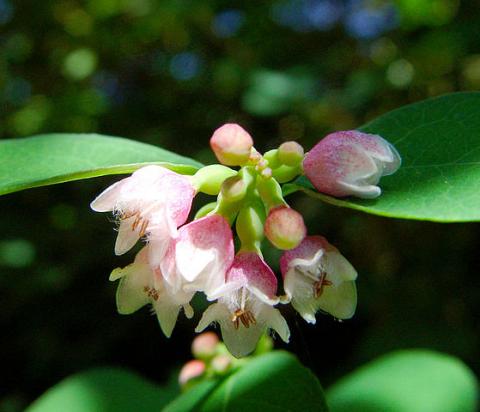
Family: Caprifoliaceae (Honeysuckle)
Common name(s): Snowberry, waxberry, coralberry
General bloom time: flowers between early May and late June; fruit matures in August and September
Identification: deciduous shrub growing from 1.5-7 feet tall
Leaves: opposite, simple, thin paper-like leaves
Flowers: flowers are pink and white growing in small clusters; each flower has two white flattened nutlets with one seed per nutlet
Fruit: pale green to solid white, poisonous to humans if consumed in certain amounts
Habitat: open forests, shrub lands, forest edges, and riparian areas; grows best in full sunlight or light shade but will survive in medium shade; thrives in moist, fertile soil but tolerates poor fertility as long as the soil is well drained; dry to moist environments; low elevation.
Ecology: Birds eat the berries, hummingbirds drink the nectar, the plant supports beneficial insects.

Image Credit: ArtMechanic
Fun Facts:
- Parts other than the berries have been used for medicinal uses